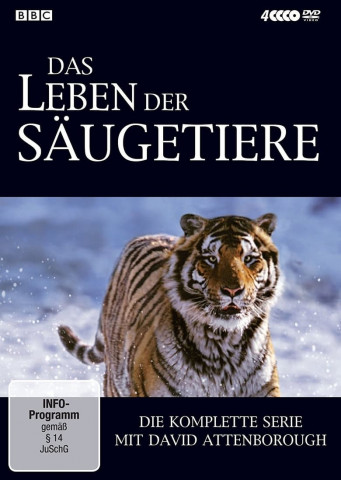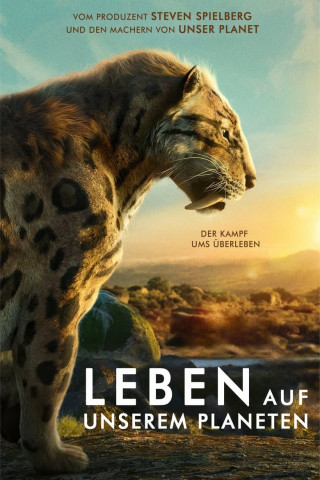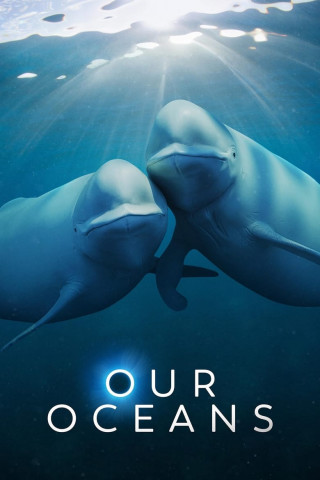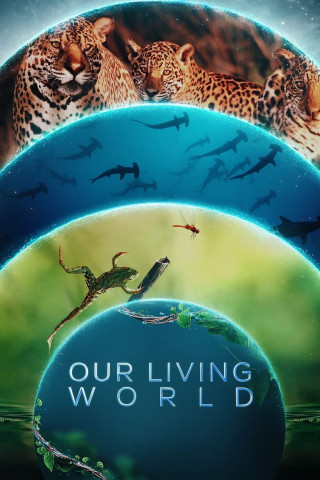
Das Leben der Säugetiere
SERIE • 1 Staffel •
Dokumentationen
• Vereinigtes Königreich Großbritannien und Nordirland • 2002
Die zehnteilige Reihe "Das Leben der Säugetiere" ist die Geschichte von mehr als 4.000 Arten: von der winzigen Maus bis zum riesigen Blauwal, vom langsamen Faultier bis zum schnellsten Sprinter, dem Geparden; vom unattraktiven Nacktmull bis zum niedlichen Menschenbaby. David Attenborough nimmt den Zuschauer mit auf eine Reise rund um die Welt und präsentiert diese so erstaunlichen und vielfältigen Lebewesen, die die komplexesten Gehirne und Verhaltensweisen im ganzen Tierreich entwickelten.
Originaltitel
The Life of Mammals
Produktionsland
Vereinigtes Königreich Großbritannien und Nordirland
Originalsprache
Englisch
Regie
Mark Linfield
FSK
6
Untertitel
Englisch
Besetzung
David Attenborough
Sprache
Englisch
Episoden-Guide
1. Staffel 1 (11 Episoden)
David Attenborough präsentiert die vielfältigste Tiergruppe, die je die Erde bevölkerte – von der winzigen Etruskerspitzmaus bis zum majestätischen Blauwal, vom gemächlichen Faultier bis zum blitzschnellen Geparden. Dies ist die Geschichte von 4.000 Arten, die die Dinosaurier überlebt und die entlegensten Winkel der Erde erobert haben. Sie haben es geschafft, jeden Teil des Globus zu besiedeln, ob trocken oder nass, heiß oder kalt.
01
Ein erfolgreiches Modell
From the tiniest bat to the massive blue whale, all mammals share the ability to nurture their young on milk and regulate their own temperatures.
02
Insektenjäger
Mammals from tiny shrews to giant anteaters have specialised in eating insects. Some have even pursued their prey into the skies.
03
Pflanzenfresser
The plant eaters take on the largely indigestible, spiny and poisonous defences of plants with some spectacular physical adaptations to diet.
04
Nagetiere
Special tools like chisel sharp front teeth and underground dwelling enable this group of mammals to feast on roots and seeds.
05
Fleischfresser
Predators and prey must evolve speed, endurance and manoeuvrability to outwit each other, and the pack hunters must maintain order in the ranks.
06
Opportunistische Allesfresser
A mammal capable of having a varied diet can be highly adaptable and exploit new environments including the cities where they thrive.
07
Rückkehr ins Wasser
With perfect streamlined bodies and great underwater speed, seals, dolphins, porpoises and whales became the new hunters of the sea..
08
Leben in den Bäumen
A range of adaptations from sucker-feet to gripping tails help the tree dwellers to survive, and in the dark forest super senses come in to play.
09
Aufsteiger
In the daily hubbub of monkey life, only those with a talent for social wheeler dealing get ahead, driving the shift towards larger brains.
10
Nahrung für's Gehirn
The natural world was transformed when one great ape began to walk upright - us. But why has this led to the development of our extraordinary brains?
11
Folge 11
Hat Ihnen "Das Leben der Säugetiere" gefallen?
Dann gefällt Ihnen vielleicht auch:






